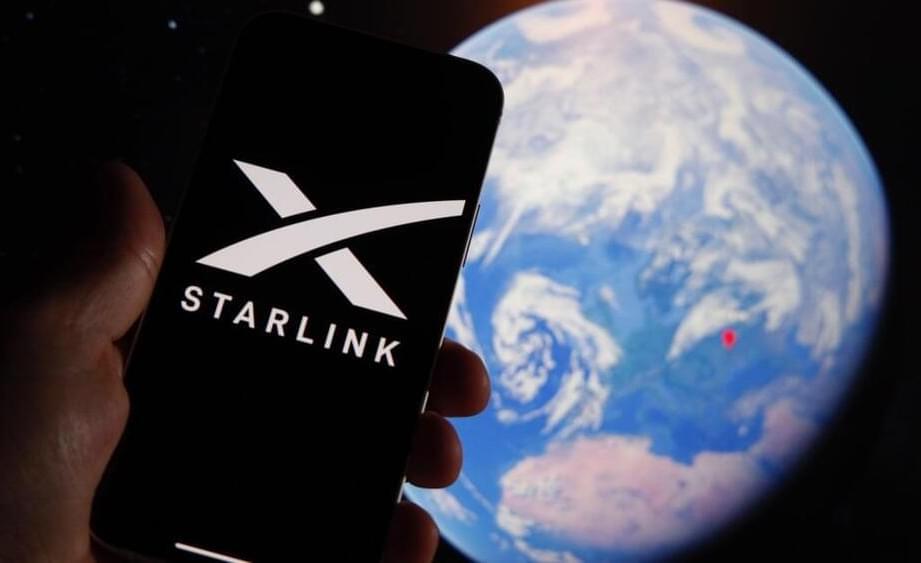Archive for the ‘internet’ category: Page 41
Nov 15, 2023
China launches world’s first 1.2 Tbps speed internet connection
Posted by Gemechu Taye in category: internet
The service can transfer 150 HD movies in just one second and has arrived two years before industry estimates.
Nadla/iStock.
China’s achievements in wired data transmission come shortly after the country boasted about the installation of 3.19 million base stations, demonstrating 5G dominance in wireless telephony. Not only do these installations outpace the US in sheer numbers, but they are also helping the eastern country transform its industrial sector to engage in high-tech manufacturing, Interesting Engineering had previously reported.
Continue reading “China launches world’s first 1.2 Tbps speed internet connection” »
Nov 13, 2023
Starlink’s rapid growth and influence has made it an indispensable part of Elon Musk’s SpaceX
Posted by Kelvin Dafiaghor in categories: Elon Musk, internet, space travel
Elon Musk’s SpaceX is known for its frequent launches, which now dominate the space industry. But the satellites that the rockets send to space are just as important for the company as the launches. Starlink is SpaceX’s answer to providing global, high-speed internet coverage using a network of thousands of satellites buzzing around the planet in a region known as low Earth orbit (LEO), about 342 miles above the Earth’s surface.
SpaceX launched its first batch of Starlink satellites in 2019. Adoption of the service has ballooned since then. The company has said Starlink has more than 2 million active customers and is available on all seven continents and in over 60 countries.
“This growth is uncharacteristic in the sense of its magnitude. Whereas prior satellite service providers have ramped up to anywhere at most between 500,000 to a little bit over a million subscribers. And this has taken, you know, a ten-year period, Starlink’s race to 2 million subscribers has taken only the better part of two years,” says Brent Prokosh, a Senior Affiliate Consultant at Euroconsult.
Nov 13, 2023
Mason scientists to work with the U.S. Navy to avert ‘internet apocalypse’
Posted by Saúl Morales Rodriguéz in categories: energy, internet, military, space
A team of George Mason University scientists has received a federal grant of more than $13 million to work with the Department of the Navy to study and better understand increased solar activity that could potentially cause an “internet apocalypse” disrupting all electronic communications on Earth, including satellite communications.
Research from the grant, which will total $13.6 million in expenditures over five years, will be done in collaboration with the Naval Research Laboratory (NRL), and will include state-of-the-art data mining, analysis, and scientific modeling, among other endeavors, led by Mason faculty, students and staff. Under the terms of the contract, Mason provides scientific support for a broad range of astronomy-related activities that are of interest to the U.S. Navy and the nation at large.
“The main focus is on solar activity and the way it can impact systems on Earth,” said principal investigator Peter A. Becker, a professor in the Department of Physics and Astronomy within the College of Science. “This is especially important to the Navy—and more broadly the Department of Defense—because high-energy outbursts from the sun can have a strong negative impact on earthly radio and internet communications. And they can also have a detrimental effect on navigation systems and energy grids on Earth.”
Nov 11, 2023
The World Is Running Out of Data to Feed AI, Experts Warn
Posted by Gemechu Taye in categories: internet, robotics/AI
As artificial intelligence (AI) reaches the peak of its popularity, researchers have warned the industry might be running out of training data – the fuel that runs powerful AI systems.
This could slow down the growth of AI models, especially large language models, and may even alter the trajectory of the AI revolution.
But why is a potential lack of data an issue, considering how much there are on the web? And is there a way to address the risk?
Nov 11, 2023
Apparent SpaceX Glitch Locks People Out of Starlink Accounts
Posted by Genevieve Klien in category: internet
Affected users have been trying to create a support ticket, but they can’t do that without access to their Starlink accounts. Starlink customer service is nowhere to be found.
Nov 10, 2023
Behold! Swedish firm unveils 5G Onion, veg powered by 5G loaded robot
Posted by Gemechu Taye in categories: biotech/medical, internet, robotics/AI
This is not a networking terminology but quite literally the vegetable grown using 5G technology.
Telia.
5G is the latest generation of mobile telephony commercially available and has been touted as a game changer in various fields. This service’s use cases that provide high-speed internet with low latency extend from medicine to gaming and entertainment to manufacturing.
Nov 9, 2023
HOLY SH!T!! Quantum Internet Will Change The World Forever
Posted by Joseph Barney in categories: internet, quantum physics, robotics/AI, security

Not a perfect presentation but a quantum Internet will be nice. The question is, how will bad actors/Black Hat hackers adapt?
Dive into the mind-bending future of technology with our latest video, Quantum Internet Will Change The World In this groundbreaking exploration, we unravel the mysteries of quantum computing and its revolutionary potential to transform the way we connect online. Discover how quantum entanglement and superposition are reshaping the internet landscape, promising unparalleled security, lightning-fast speeds, and unimaginable data processing capabilities.
Continue reading “HOLY SH!T!! Quantum Internet Will Change The World Forever” »
Nov 9, 2023
Fake everything: how machine learning is being used to fight back against disinformation campaigns
Posted by Joseph Barney in categories: cybercrime/malcode, food, internet, robotics/AI, sustainability

Another good use for AI. Fighting disinformation.
About 60% of adults in the US who get their news through social media have, largely unknowingly, shared false information, according to a poll by the Pew Research Center. The ease at which disinformation is spread and the severity of consequences it brings — from election hacking to character assassination — make it an issue of grave concern for us all.
Nov 8, 2023
An energy efficient transmitter based on a CMOS chip and silicon photonics
Posted by Saúl Morales Rodriguéz in categories: computing, internet
The widespread use of electronic devices to interact with others and access the internet has increased the need for highly performing communication technologies that can transmit data faster and more efficiently. Increasing the data transmission rate of devices without adversely impacting their energy efficiency, however, is a challenging task.
Researchers at University of Southampton in the UK recently developed a promising new transmitter based on complementary metal-oxide-semiconductor (CMOS) technology and silicon photonics. This transmitter, introduced in Nature Electronics, was found to achieve remarkable data transmission rates while consuming minimal energy.
“The integration of silicon photonics with electronics is essential for producing practical systems for numerous applications,” David J. Thomson, one of the authors of the paper, told Tech Xplore.















